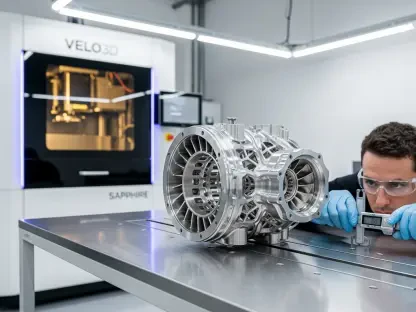In recent years, AI’s growth trajectory has captivated industries globally, promising unprecedented technological innovation and market potential. However, this rapid expansion raises critical questions about whether its benefits outweigh substantial environmental and economic costs. Data suggests that by 2030, energy consumption related to AI-powered data centers could rival national electricity consumption, emphasizing the need for sustainable energy solutions. This analysis examines these pivotal trends, unraveling their implications for stakeholders across sectors.
Context of AI’s Transformative Influence
AI’s transformative capacity is undeniable, reshaping functionalities in both industry and everyday life. The growth in AI technology has introduced expansive data centers, pivotal for processing massive datasets integral to AI operations. Acutely aware of their environmental footprint, companies face pressure to meet operational demands sustainably. Therefore, understanding AI’s trajectory provides critical insights into future market dynamics and underscores the urgency of innovative solutions for balancing technological growth with environmental responsibility.
Analyzing Current Market Trends and Projections
Energy Dynamics and AI’s Footprint
The intensive energy demands of AI technology present a significant challenge, as reliance on conventional energy sources like coal and natural gas remains prevalent. Global energy consumption from data centers is projected to double, underscoring the environmental stakes. Despite this, companies are pursuing decarbonization by exploring cleaner energy alternatives, such as nuclear power. These efforts, while promising, highlight a necessary shift toward integrating renewables that can provide scalable yet financially viable solutions for AI’s energy challenges.
Economic Ramifications and Infrastructure Investments
AI’s expansive growth necessitates significant infrastructure investments, impacting various economic sectors. As utility companies allocate resources to meet AI’s energy demands, costs filter down to consumers, often resulting in increased electricity bills. Investments in new power plants and transmission lines illustrate the economic ripple effect, where technological advancements dictate new consumption patterns and financial strategies. Moreover, stakeholders must consider the regulatory landscape and how it influences both AI development and energy policies.
Regional and Market Variances in AI Deployment
Differentiating between regions elucidates how local policies and market conditions uniquely shape AI growth. While some regions advance rapidly due to favorable policies, others lag due to persistent regulatory hurdles. The diversity of regional responses highlights complexities in achieving a balanced global AI ecosystem. Thus, understanding these dynamics enables stakeholders to better navigate the intersection of technology, policy, and energy within their specific contexts, tailoring solutions that address distinct market demands.
Future Outlook and Strategic Approaches
Predictive analyses reveal potential pathways for AI development that align with sustainable and economic goals. Industry leaders suggest that innovations in renewable energy integration could drive AI’s future, while evolving regulatory frameworks might facilitate more sustainable data center operations. Such developments present opportunities to mitigate environmental impact while capitalizing on AI’s transformative potential. Strategic market insights encourage exploration of technology solutions that harmonize growth with responsibility, urging investment in infrastructure that anticipates these shifts.
Reflection and Strategic Insights
Reflecting on these findings, the necessity for strategic adaptations becomes apparent. Acknowledging AI’s dual challenges, integrating renewable energy within data center operations, and adopting forward-thinking regulatory measures are paramount. Embracing technological innovations and strategic infrastructure improvements offers actionable paths, fostering a framework that encourages sustainable AI expansion. Emphasizing collaboration, investment, and adaptive policies will allow stakeholders to effectively navigate within this dynamic landscape, ensuring that AI’s innovations can proceed without compromising environmental and economic integrity.









